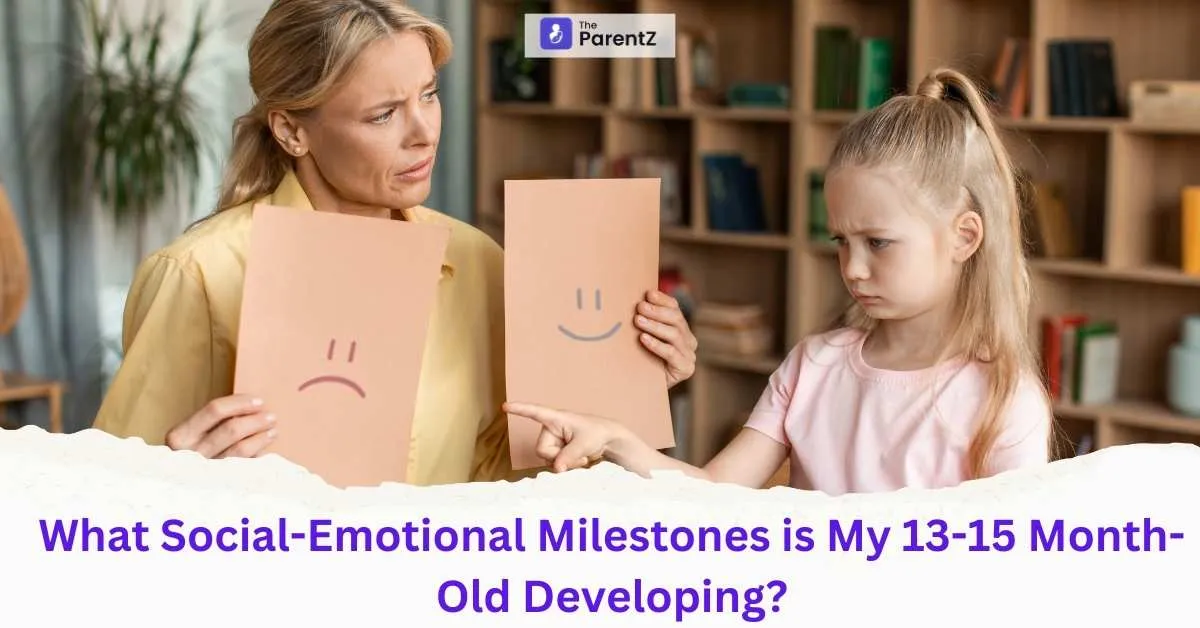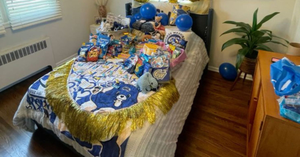Parenting a toddler isn’t just a job—it’s an unfolding love story. Between the sticky hands and the sleepless nights, there’s a quiet wonder in watching your baby slowly become their own little person. If your child is between 13 and 15 months old, you're right in the heart of this magical transformation—from baby to budding toddler. And while they may still wobble on their feet, their emotional world is beginning to stand tall.
At this age, your child is doing more than just learning to walk—they’re learning how to feel, to connect, and to make sense of the people and emotions around them. It’s a tender stage, and understanding what’s going on behind those curious eyes can help you respond with more patience, warmth, and confidence.
The Roots of Social-Emotional Growth
Social-emotional development isn’t something that just "happens"—it’s nurtured. It’s about how your child begins to form relationships, regulate feelings, and build trust. And here's the beautiful part: It all starts with you.
From the first time your baby locked eyes with you, their brain began wiring for love, security, and empathy. In fact, science confirms that the first few years of life are when emotional and social pathways in the brain are shaped most rapidly. According to research in developmental psychology, consistent, warm, and responsive caregiving during this time can literally shape how a child views relationships for life.
What to Expect: Social-Emotional Milestones (13–15 Months)
1. Who’s That in the Mirror?
Self-awareness starts emerging now. Your toddler may begin recognizing themselves in a mirror or photo and start responding with giggles, curiosity, or even a kiss to their reflection. This budding sense of identity also brings a new awareness of others—like noticing when another child is upset or imitating your facial expressions. You’re witnessing the roots of empathy forming in real time.
2. Separation Anxiety
The Tug on Your Heartstrings. Yes, the tears when you leave are hard. But they’re also a good sign—your child has formed a secure attachment to you. They're learning what it means to love, miss, and trust. Easing these transitions with short, predictable goodbyes and consistent routines teaches them that you're coming back, every time. That trust becomes a lifelong anchor.
3. Side-by-Side Play
Toddlers don’t really “play together” yet. But you’ll start noticing them playing next to another child, maybe sneaking glances or grabbing the same toy. This is called parallel play, and while it might seem disconnected, it’s a vital step toward social interaction. Be patient—sharing is still a foreign concept, but the building blocks of social intelligence are already in motion.
4. Big Feelings in a Small Body
You’ve probably seen it already—a tower falls over and suddenly, it's meltdown city. Your toddler is learning how to express emotion, but they haven’t quite mastered the art of regulating it. That’s where you come in. When you calmly narrate their feelings—“You’re mad because the toy won’t work”—you’re not just helping them feel understood. You’re teaching them language for their emotions, and that all feelings are safe in your presence.
5. Monkey See, Monkey Do
Your toddler is watching everything. From how you treat the waiter to how you react when you’re frustrated. Imitation is how they make sense of social cues. When they “feed” a doll or talk on a toy phone, they’re not just playing—they’re practicing what it means to be human.
How You Can Support Their Growth
Build a Safe, Predictable Space: Routine is your child’s emotional comfort blanket. It helps them know what’s coming next, and that makes the world feel a lot less scary. Consistency builds confidence.
Talk About Feelings—Theirs and Yours: Use simple language to label emotions: “You're sad we had to leave the park.” This not only builds emotional vocabulary, it also validates their experience.
Play Is More Than Just Fun: Interactive play like peek-a-boo or rolling a ball back and forth isn't just entertaining—it teaches turn-taking, patience, and connection. Storybooks about emotions are also great tools for emotional growth.
Be Their Calm: Tantrums are going to happen—often when you’re in a hurry or already exhausted. But your calm presence teaches them that even when their world feels out of control, they can count on you to hold steady.
Let Them Try (Even If They Fail): Yes, watching your toddler struggle with a spoon or trip while putting on shoes is hard. But every wobble builds independence and resilience. Celebrate the effort, not just the outcome.
The Deeper Science of Attachment
John Bowlby, the father of attachment theory, believed that a secure bond with a caregiver is the foundation of emotional well-being. Kids with secure attachments aren’t “clingy”—they’re confident enough to explore the world because they know someone has their back.
Studies show that children with secure early attachments tend to grow into adults with better emotional regulation, stronger relationships, and higher resilience. And the key to that bond? Consistency, sensitivity, and presence. You don’t need to be perfect—just present and responsive.
A Final Word from the Heart
Your child doesn’t need you to have all the answers. They just need you. These early toddler years are filled with big emotions in tiny bodies, and your role is both extraordinary and deeply human.
There will be days that test your patience and others that melt your heart. But every hug, every story you read, every time you pause to understand their cries—those are the moments that shape who your child will become.
You are not just raising a toddler. You are raising a future adult with compassion, resilience, and confidence. And that, dear parent, is the most important job in the world.








Be the first one to comment on this story.